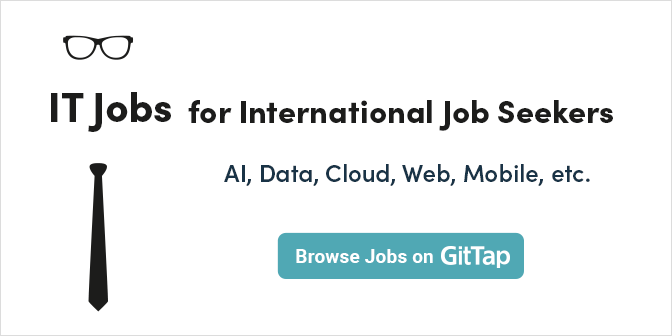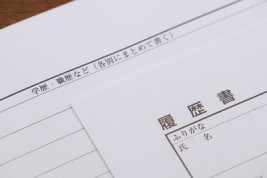How much difference is there in salary between Japan and other countries for the same job?
In Japan and overseas, even for the same job, there can be differences in salary. For those thinking of moving from overseas to Japan to find work, you want to be paid a decent salary to live in a country you are not familiar with. So, how much of a difference is there actually in the salary for the same job?In this article, we will explain the specific differences in salary for the same job in Japan and overseas, the reasons for these differences, and the key points for getting a stable salary in Japan. We will also be discussing expenditure as well as salary, so please refer to this if you are planning to live in Japan.If you are looking for a job in Japan with a high salary in the same occupation, we recommend the foreigner-focused recruitment agency “G Talent”. The professionals at this agency will handle all the complicated salary and condition negotiations on your behalf, so you will have a better chance of finding a job in the same occupation with a high salary.How much difference is there in salary between the same occupation in Japan and overseas?There are cases where salaries differ between overseas and Japan, even for the same job type. As the companies that are increasing their market share differ from country to country, there may be significant differences in each region. From here, we will compare the average salaries in Japan and overseas by industry.Differences in salary for the same job type: Japan vs. United StatesThe United States is a country that always comes out on top in the GDP rankings published every year, and there are many companies there that offer services that are also familiar in Japan. The differences in salary for the same job type in the United States and Japan are as follows.[Average salary by occupation]OccupationUnited StatesJapanIT10-12 million yen4.36 million yenConsulting18-19 million yen5.85 million yenFinance9.6 million yen4.54 million yenManufacturer7.9 million yen4.53 million yenIn the IT industry, there is a difference in salary of more than double that of Japan, even for the same job type. As there are many large companies such as GAFA concentrated in the US, it can be assumed that salaries in the IT industry are high. There is also a difference in salary of 1.5 to 3 times that of Japan in industries other than IT, and overall salaries are higher in the US.Reference: 海外のエンジニアの年収は?年収を増やす方法を解説/TECHのススメDifferences in salary for the same job type: Japan vs. United KingdomThe differences in salary for the same job in the UK and Japan are as follows.[Average salary by occupation]OccupationUnited KingdomJapanIT4.8 million yen4.36 million yenConsulting3.73 million yen5.85 million yenFinance8.5 million yen4.54 million yenManufacturer3.28 million yen4.53 million yenCompared to the US, salaries are generally lower. Compared to Japan, Japan is inferior in the IT and finance industries, but Japan pays slightly higher salaries in the manufacturing and consulting industries.Reference: あの職業は年収いくら?英国の給与事情/COSMOPOLITANDifferences in salary for the same job: Japan vs. China China, which has the world's largest population, is a country with lower prices than Japan. However, it can be seen that in recent years, salaries in China are relatively higher than in Japan.[Average salary by occupation]OccupationChinaJapanIT14 million yen4.36 million yenConsulting11 million yen5.85 million yenFinance4.8 million yen4.54 million yenManufacturer4.87 million yen4.53 million yenIn the IT and consulting industries, salaries are higher than in Japan. Some companies even pay higher salaries than in the US, where there are many major IT companies, and the range of salaries varies widely from company to company.Reference: 中華IT最新事情/Hatena BlogWhy are there big differences in salaries between Japan and other countries, even for the same job? Why is there a difference in salary between the same job in Japan and overseas? The following three reasons can be cited for the large difference in salary between the same job in Japan and overseas.Differences in pricesThe existence of large companiesThe size of investment appetiteDifferences in pricesJust as minimum wages differ from region to region in Japan, prices also differ from country to country, and the higher the prices, the higher the salaries tend to be. For this reason, even if salaries seem high compared to Japan, when you take into account essential living expenses such as rent and food, the standard of living may not be that different.Reference: 日本とアメリカの賃金の差/スクールナビThe existence of large companiesThere are a number of large companies that are so successful that they have a global market share, and their business performance is also strong. In order for these large companies to grow further, they need to acquire talented people. It is thought that they pay high salaries to lure talented people away from other companies, and as a result, salaries in the industry as a whole are raised.Reference: アメリカ巨大IT企業の給料がケタ違いに高い理由/東洋経済オンラインThe size of investment appetiteIn Europe and America, the performance-based evaluation system is the norm, with a focus on results and contribution rather than on the person. There is a tendency to focus on how much an employee contributes to the company rather than on their skills, abilities or personality. Therefore, the higher the contribution to the company, the greater the return, and companies that want to improve their performance are willing to invest in people who make a high contribution to the company.Points for comparing salaries for the same job in Japan and overseasIf you only look at salaries when comparing salaries in Japan and overseas, you may miss out on a good opportunity. If you are looking at the same job, you will be particularly concerned about the difference in salary, but it is important to compare from a different perspective. The following are two points to note when comparing salaries for the same job in Japan and overseas.If you come to Japan from overseas, your salary will not necessarily decreaseEven if your salary decreases, it doesn't necessarily mean your standard of living will also decreaseIf you come to Japan from overseas, your salary will not necessarily decreaseWhen comparing salaries for the same job in Japan and overseas, salaries in Japan tend to be slightly lower, but this does not necessarily mean that salaries will decrease for all jobs.Depending on the company, there are also cases where salaries are higher than overseas, and in some cases, you may be able to work under the same conditions as your standard of living overseas, taking into account your career and skills to date. The higher your career and skills, the more likely you will be to find a job in the same field with better conditions, and the more smoothly you will be able to negotiate your terms and conditions.Reference: 年収を上げる方法9選!転職しない場合とする場合に分けて、年収を上げるコツを紹介します!/Geekly MediaEven if your salary decreases, it doesn't necessarily mean your standard of living will also decreaseIf you compare salaries for the same job in Japan and overseas, there is a high possibility that your annual salary in Japan will decrease. However, if you take into account factors such as the cost of living and rent, even if your salary decreases, it does not necessarily mean that your standard of living will decrease. Depending on the area where you base your life, you may be able to live a rich life even if your salary does not reach the level of overseas salaries. The reason for this is the difference in prices between Japan and overseas.Differences in prices between Japan and other countriesNo matter how high your salary is, if prices are high, you won't be able to live a comfortable life. The differences in the consumer price index, which is an indicator of fluctuations in goods and services in Japan and major countries overseas, are as follows.[Consumer Price Index for Major Countries]2022年JuneJulyAugustSeptemberOctoberJapan2.4%2.6%3.0%3.0%3.7%United States9.1%8.5%8.3%8.2%7.7%United Kingdom9.4%10.1%9.9%10.1%-China2.5%2.7%2.5%2.8%2.1%Reference: 消費者物価指数 / 2020年基準消費者物価指数 / 月報/e-StatIf you look at the consumer price index for the US and UK, where salaries are higher than in Japan, you can see that the rate of price increase is higher than in Japan. Because salaries are higher, prices are also higher, so it can be said that even if you work in Japan, your standard of living is unlikely to decrease.Comparison of rent in Japan and overseas Just as rent varies from region to region in any country, there are also big differences in rent between overseas and Japan. Rent accounts for a large proportion of monthly expenditure, so it can also affect the standard of living.Assuming you rent a 70m2 house, we will introduce the world's rent prices in a ranking format.Singapore: 253,190 yenLondon: 194,110 yenNew York: 179,690 yenHong Kong: 179,400 yenTokyo: 151,000 yenJapan is also included in the ranking of rent prices, but there are many areas in Tokyo where rent is below 100,000 yen. In order to maintain your standard of living, it is important to keep your monthly rent as low as possible.Reference: 日本の家賃は世界で何位? 世界の家賃相場をわかりやすく「図」で比較!/楽待What you need to earn a stable salary in JapanJapan is a country where salaries are relatively low compared to the rest of the world, so salaries for the same job are likely to be lower. For this reason, many people may find it difficult to take the plunge and find a job in Japan. However, it may be a waste to give up on working in Japan just because of the salary.To get a stable salary for the same job in Japan, be aware of the following five points.Choose a global company with a relatively high salaryHone skills that you can use at workAim to obtain qualificationsImprove your language skillsBuild a career in JapanChoose a global company with a relatively high salaryMany global companies adopt a performance-based system, so compared to Japanese companies, many of them have a higher average salary. Furthermore, global companies that operate overseas are always looking for talented people. In order to secure talented people, many companies also set their salaries high.If it is difficult to find a new job at a global company, we recommend using a job-placement service that specializes in global companies. If you are new to job-hunting in Japan, consider using a job-placement agency that can help you with things like visa acquisition and the selection process.Reference: 外資系企業の年収は日系企業の約2倍!その理由を徹底解説/35ishHone skills that you can use at workIn order to earn a stable income in Japan, it is also important to improve your expertise and hone your knowledge and skills in line with the times. You must never be satisfied with the status quo, and you must always remember to keep learning.By becoming a highly sought-after employee, you will also be able to move up to a higher position. If it is a field you are good at, you will be able to absorb information quickly, and you may be able to improve your expertise more efficiently.Reference: 100万人超の職歴分析で判明「年収が高くなる人」のスキル20選/JOB PICKSAim to obtain qualificationsAs well as differentiating yourself from others with your knowledge and skills, acquiring qualifications that are highly relevant to your work is also key to earning a stable income. However, qualifications that anyone can obtain are not very meaningful.It would be good to have a different perspective from others, such as in fields that other people are not looking at or in qualifications that are difficult to obtain. Even if it is a private qualification in Japan, if there is one that you can use in your work, it is worth studying.Reference: 【今が狙い目】学歴不問で年収アップに効く「スゴい資格」ベスト1/ DIAMOND onlineImprove your language skillsThe bigger the company, the higher the average annual salary and the easier it is to earn a stable income, but the bigger the company, the more language skills are required. In particular, in companies that have a lot of communication with overseas, the higher your language skills, the more highly you will be evaluated, and it is not uncommon for this to be reflected in your income. In addition to basic English, learning a language that is closely related to your work will be useful.In addition, there will be many opportunities to communicate in Japanese within the company. It is a good idea to make sure you have a good grasp of Japanese so that you can respond smoothly.Reference: 大卒外国人の採用、「高い日本語力」要求が壁に/日本経済新聞Build a career in JapanIn order to stabilize your income in Japan, it may be difficult without a career in Japan. You could decide on a job that will allow you to live comfortably, and live in Japan while building up your career until the right opportunity comes along.If you have the expertise to be an immediate asset, making use of the know-how you have cultivated up to this point, there is a high possibility that you will be able to work at the company and under the conditions you want. First of all, taking your time and carefully building up your experience may be the quickest way to stabilize your income in Japan.There can be differences in salary between overseas and Japan, even for the same jobThere can be differences in salary between overseas and Japan, even for the same job, for the three reasons we have introduced here. However, in many cases, living costs are higher overseas than in Japan, so even if your salary decreases in Japan, it does not necessarily mean that your standard of living will decrease. It is important to have a broad perspective, rather than just focusing on salary and other conditions.If you are thinking about changing jobs or finding a job in Japan, we recommend “G Talent” , a recruitment agency specializing in foreign IT personnel. You can have a job that suits you chosen based on your experience and skills to date, and the professionals at the recruitment agency will negotiate your salary and conditions on your behalf. You can also receive various support, such as support for the selection process, visa acquisition, and Japanese language, so it is also reassuring for those who are looking for a job in Japan for the first time.















